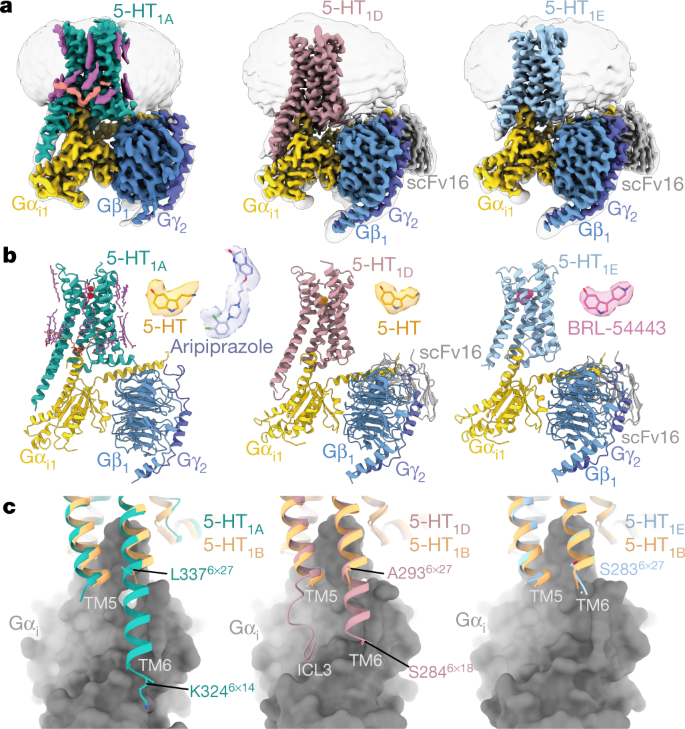Serotonin is an important neurotransmitter, which plays a role in the brain and endows people with the ability to feel happiness. Therefore, it is also known as a “happy neurotransmitter”. The serotonin system is involved in a wide range of physiological functions of the human body, including the regulation of brain memory, cognition, emotion, learning, and addiction. The disorder of the serotonin system may cause a variety of mental diseases (such as depression, schizophrenia, bipolar disorder, migraine, etc.). The physiological function of serotonin is mediated by more than ten serotonin receptors. To clarify their molecular structure and functional mechanism can bring new hope for the treatment of depression, schizophrenia, and other mental diseases.
Xu Huaqiang and Jiang Yi, researchers of Shanghai Institute of pharmacy, Chinese Academy of Sciences, together with Zhang Yan, Professor of Zhejiang University, and several research groups at home and abroad, published the latest research results in the journal Nature. They reported the near-atomic resolution structure of three serotonin receptors for the first time in the world, revealing how phospholipids and cholesterol regulate receptor function, and the molecular mechanism of the antidepressant drug Aripiprazole.

In the past, little is known about the fine structure of serotonin family receptors, which makes it difficult to develop new targeted drugs. In order to develop more effective and less toxic drugs, researchers first analyzed the structure of three serotonin receptors binding to different ligands by single-particle freeze electron microscopy, including the structure of 5-HT1A receptor, a therapeutic target for depression and schizophrenia, 5-HT1D receptor, a therapeutic target for migraine, and the structure of the 5-HT1E receptor, potential selective therapies for a variety of mental diseases. These structures provide an important basis for drug development targeting serotonin receptors.
The serotonin receptor is a kind of protein located on the cell membrane. In addition to endogenous ligands and drug molecules, lipids also play an important role in maintaining the normal function of the receptor. However, due to technical problems, the mechanism of lipid regulating membrane proteins is still unclear. This study solved a number of technical problems, and reported for the first time in the world that the 5-HT1A receptor is regulated by phospholipids and cholesterol.
This study found that phospholipid molecule PI4P can bind to the interaction interface between the 5-HT1A receptor and G protein. Multiple cholesterol molecules bind to the transmembrane region of the receptor and directly participate in the activation of the receptor; cholesterol molecules also participate in regulating the binding of Aripiprazole to the receptor. Aripiprazole is the first-line drug for the treatment of schizophrenia, and it is also used for the treatment of depression, bipolar disorder, autism, and other important mental diseases. Revealing the mechanism of phospholipid and cholesterol regulating serotonin receptors will provide an important basis for further understanding the serotonin system and developing new safe and effective drugs for the treatment of mental diseases.
Reference
Xu, P., Huang, S., Zhang, H. et al. Structural insights into the lipid and ligand regulation of serotonin receptors. Nature 592, 469–473 (2021). https://doi.org/10.1038/s41586-021-03376-8